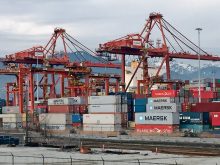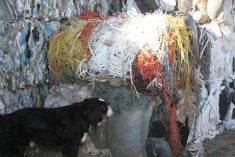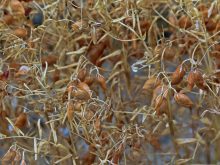BRANDON – A Manitoba farm leader is worried that the so-called son of AIDA program will bear a strong resemblance to its grandfather.
Don Dewar delivered a dire message to members of Keystone Agricultural Producers last week after learning agriculture ministers are leaning toward signing a three-year agreement to run a program that looks a lot like the 1998 version of the Agricultural Income Disaster Assistance program.
Dewar criticized the program as deputy agriculture ministers toiled in Montreal to hammer out an agreement. It will probably be signed in early July at a meeting of provincial agriculture ministers.
Read Also

Canadian farmers need level playing field for regulations – says Minister MacDonald
Federal agriculture minister Heath MacDonald is urging the Canadian Food Inspection Agency and the Pest Management Regulatory Agency to speed up their decision making.
“They’re inking the framework agreement without any discussion with farmers, and I think we’ll hold her feet to the fire on that one,” said the president of KAP.
Dewar is angry Manitoba’s agriculture minister has failed to talk to farmers about what’s happening.
Rosann Wowchuk and her chief bureaucrats regularly consulted a provincial safety nets group before the last round of negotiations about how federal money is divided among provinces.
But the group has not met since February, said Dewar.
“Our government is not talking to producers,” he said.
KAP wants to convince Wowchuk before the meeting to support their position. While the 1999 version of AIDA is not the ideal disaster assistance program, it’s the best alternative, Dewar said.
Other suggestions for revenue insurance programs may be more attractive, but there’s not enough time to get national consensus on them, he told KAP members.
The 1999 version of AIDA includes coverage of negative margins, better ways to calculate margins and improvements in how inventory is accounted for, he explained.
But provincial governments can’t agree on which features to include. That’s why they may return to the 1998 AIDA model, said Dewar.
“Let’s not go back to ’98 and say we’re stuck with it.”
Some provinces also favor scaling back the maximum AIDA payment to $100,000 from the current level of $175,000.
The Manitoba government has not supported coverage of negative margins because it worries it will lead to farmers walking away from crop insurance. However, the national safety nets advisory committee has proposed a link between the two programs so farmers aren’t tempted to forsake sound risk management.
The main reason farmers were able to make changes to AIDA for 1999 was because the federal government wanted to save face, said Dewar.
He said the government was worried that, under 1998 rules, money would be left over at the end of the two-year program.
However, with the 1999 changes, the program may run short of money, he said. In Manitoba, farmers will initially receive only 58 percent of 1999 AIDA payments until the government determines whether there’s enough money to cover the full claims.
Provincial governments are still peeved at the federal government for foisting AIDA on them in 1998, and making changes in 1999 without much consultation, said Dewar.
“It boils down to they don’t want to spend the money.”














